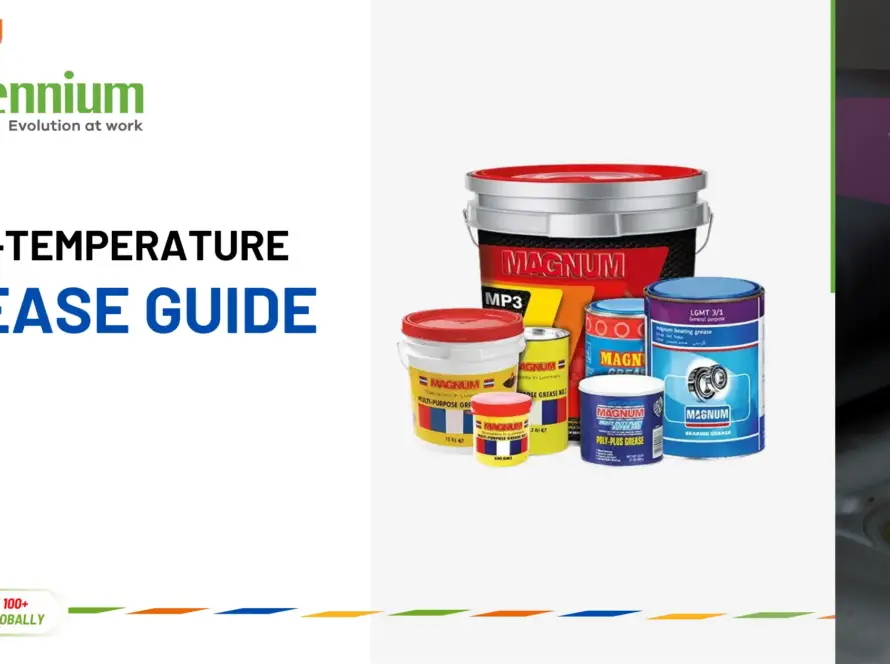Friction inside an engine causes metal surfaces to grind under high load and temperature conditions when operating. High friction leads to heat buildup and accelerated damage that proper engine lubrication can help prevent over time.
Without steps for engine friction protection, performance will dip, and its lifespan may suffer under continuous use. This guide provides engine maintenance tips that help reduce engine friction through proven methods suitable for all vehicles.
The True Cost of Friction in Engines
Friction happens when key engine parts rub together under pressure, creating heat and unwanted wear over time. Knowing the effects of friction helps design a maintenance plan to prevent engine wear and reduce engine friction in all conditions. This section explains friction origins and highlights why it must be managed early to protect engine lifespan.
Defining Engine Friction
Engine friction occurs when metal surfaces move against each other under extreme heat and pressure during combustion cycles. Pistons, crankshafts, and bearings undergo this force repeatedly during each engine revolution while moving parts remain tightly sealed. Over time, this constant motion can wear down surfaces and lead to reduced performance without proper intervention. Understanding friction sources offers insight to improve efficiency and protect engine life with targeted service practices.
Performance Loss Due to Friction
Excessive friction forces convert mechanical energy into heat that robs the engine of usable power output over time. This loss of energy increases fuel use and reduces torque under load when engine speeds climb to high levels. Heat buildup from friction can warp metal components and shorten the effective service life of critical parts in seconds. Implementing regular reviews of friction points helps address wear signs before they lead to costly engine repairs.
The Power of Lubrication for Smooth Operation
Oil forms a protective film that stops metal-to-metal contact under pressure and reduces wear between parts. Proper engine lubrication ensures key components glide easily and maintain peak performance during cold starts and high-speed use. It describes how correct lubrication routines extend part life and maintain power delivery under all loads.
Picking Proper Engine Oil Grade
Selecting the correct oil grade depends on maker guidelines and engine design factors such as temperature range and load cycles. Viscosity ratings define oil flow at low and high temperatures, helping protect moving parts during all operating conditions. Additives in premium oils can lower surface friction and boost protective film strength under extreme loads at high speed. Choosing a branded oil that meets the required specs aids engine friction protection and performance longevity throughout service intervals.
Timing Oil Swaps to Keep Friction Low
Regular oil changes flush out particles that can grind against engine surfaces and raise friction rates quickly. Adhering to service schedules ensures fresh oil film maintains low friction between pistons and cylinder walls under all conditions. Skipping intervals risk oil breakdown and sludge buildup that accelerate wear on bearings and other precision engine elements. Timely oil swaps rank among the best engine maintenance tips for protecting engine parts from premature failure.
Additives That Aid Smooth Motion
Some oil additives contain friction modifiers that help reduce contact wear under fluctuating temperatures and load situations. Before adding any product, confirm compatibility with base oil grade and maker recommendations to avoid damage. Additives can strengthen the oil film to improve protection over long drive spans and under tough conditions. Quality additives work in concert with engine lubrication routines to further reduce engine friction during critical phases.
Upkeep Strategies for Smooth Engine Operation
Regular inspection and service schedules keep friction under control and slow down wear on vital engine parts. These engine maintenance tips guide owners through checks that prevent serious damage and extend component life spans significantly. Service of specific components prevents friction hotspots and keeps engine output reliable under varied driving conditions.
Servicing Moving Elements to Cut Friction
Inspect piston rings and bearings for wear marks scoring or any signs of surface distress during routine service visits. Measuring clearances between moving parts ensures tolerances remain within maker limits and reduce unwanted metal contact conditions. Initially, the motivation for replacing worn piston rings and seals has to do with sufficiently maintaining compression and preventing the seepage of oil that could damage an engine due to friction. Cleaning the components prior to assembly ensures that abrasives do not enter the engine areas and cause wear over time.
Investing in Quality Components for Smooth Running
High-grade bearings and seals often meet tighter tolerances and resist wear under sustained engine stress. Rings made from quality metals hold shape under high temperatures, minimizing friction risk over the engine life span. Using parts that match the required specifications preserves oil film integrity and helps protect critical surfaces during operation. Investing in durable components can limit repair costs and increase intervals between major overhauls over several years.
Spotting Early Signs of Friction Trouble
Detecting friction issues early in engine operation can prevent major repair costs and avoid unexpected breakdowns on the roads. Simple checks reveal warning signs that help prevent engine wear and keep performance at safe levels over time. Early troubleshooting saves money and avoids towing scenarios by addressing small friction issues before serious failures occur.
Listening for Telltale Engine Sounds
Unusual knocking, clicking or grinding noises often indicate excess friction between moving engine components under heavy load conditions. Changes in engine rhythm under acceleration can signal bearing wear, seal failure or loss of adequate lubrication film strength. Consistent noise patterns should prompt an immediate check by a skilled technician before issues evolve into serious failures. Prompt attention to these audible signs helps reduce engine friction and limits damage to costly moving parts early on.
Scheduling Regular Engine Health Checks
Diagnostic scans identify friction-related faults in bearings, valves, and seals early. Abnormalities can signal oil leaks, gumming, or deposits causing grooves and cooling issues. Monitoring oil pressure and temperatures shows diminishing lubrication effectiveness. Maintaining service records helps plan checks and manage engine conditions.



